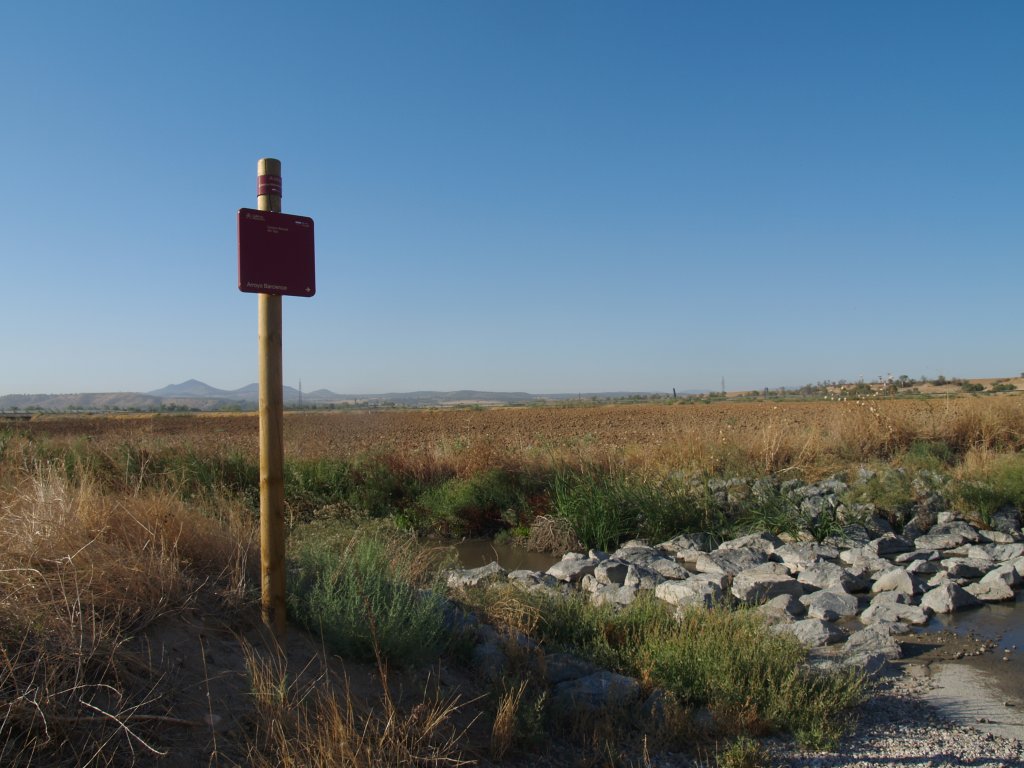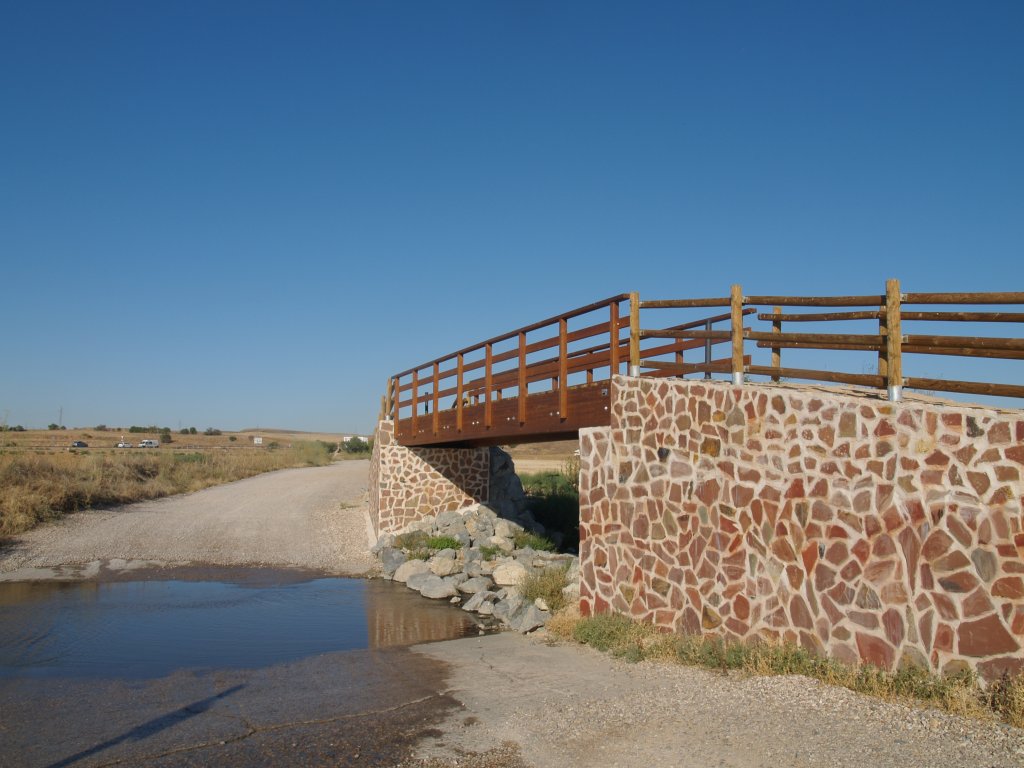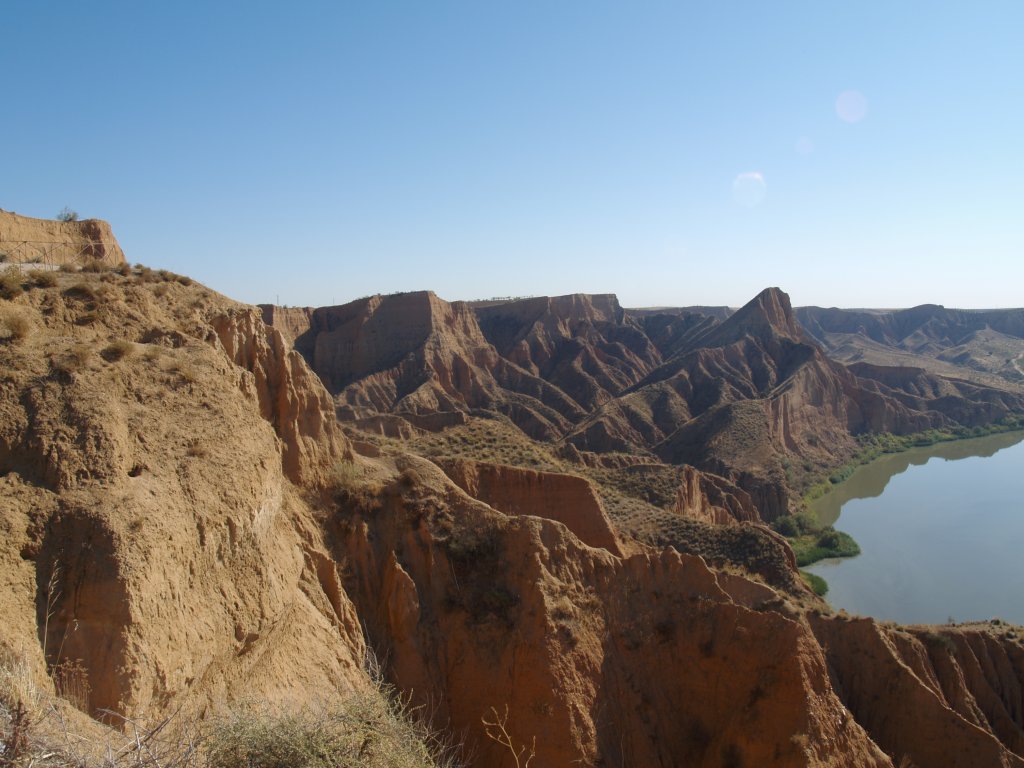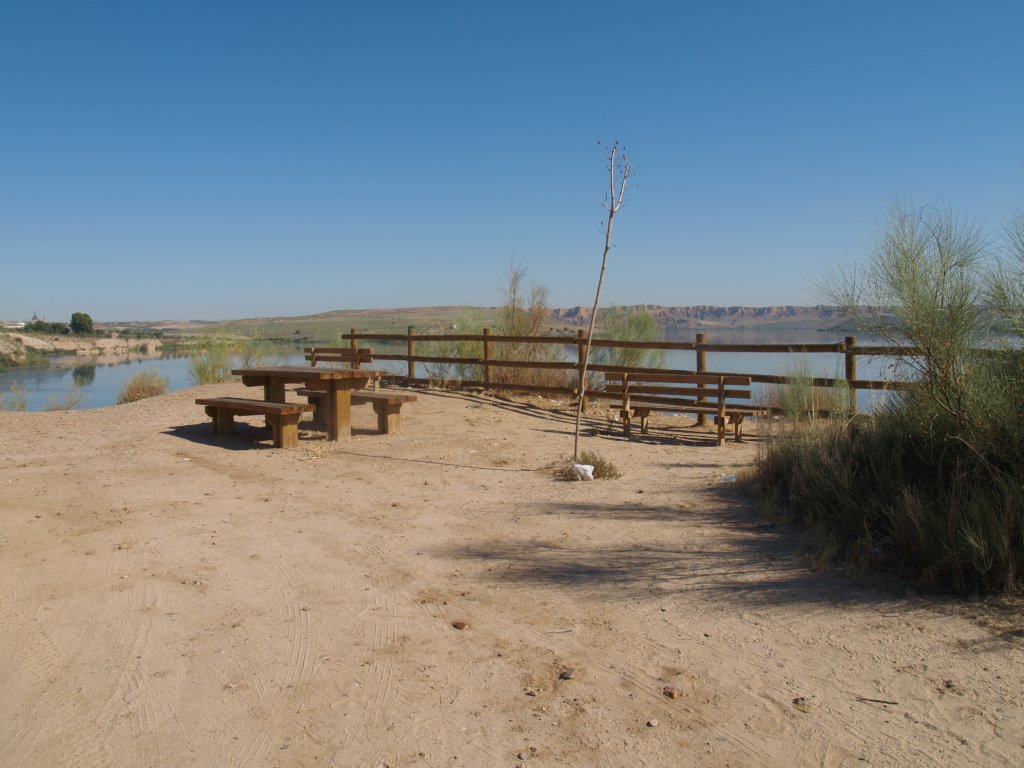Stage 23: Albarreal de Tajo - La Puebla de Montalbán
Description

Spectacular views of the River Tagus through Las Barrancas and Castrejón Reservoir
This Stage traverses through some of the most spectacular landscapes of the Tagus: the Barrancas and the Castrejón Reservoir with its large canal. The route ends at Puebla de Montalbán, a beautiful town with wonderful places to discover.
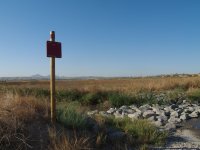
A signpost that points to the west-southwest indicates the exit from Albarreal. The road crosses a bridge over the TO-7741, and proceeds over a track for several kilometres.
Large farmhouses surrounded by sprawling olive groves and a few intensive livestock farms flank the route. Veering to the right, it crosses the Barcience Brook over a beautiful wooden bridge. In the summer, the brook is mostly dry; however, in the rainy season, it can carry a significant flow of water, as can be inferred by the height of the arch.
From here, the route leads to an interStage with the CM-4000, where caution should be exercised owing to heavy vehicle traffic. Even after crossing the interStage to the opposite side, caution must continue to be exercised as lorries from nearby quarries, which abound throughout this route, also travel along this Trail. One must remain vigilant for the next two kilometres during which the route is shared with motorised vehicles.
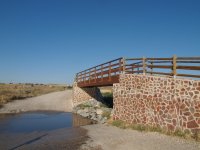
The track makes a right turn on a clearly marked interStage, passing next to a fighting bull breeding farm. With a little luck, one might catch a glimpse of the bulls grazing in the meadows within the farm.
From here, the route climbs steadily up the rolling hills covered with fields of grain for about three kilometres. The climb is gentle but long; hence, it is advisable to carry adequate water supplies. Once on the top, there are wonderful views of the area, including the main attraction of this route: Castrejón Reservoir.
For a few kilometres, the Trail continues up-and-down through breath-taking landscapes of rolling hills and beautiful colours. At the next interStage, the route veers left towards a sign indicating the proximity of Las Barrancas. A few kilometres further on, the path arrives at the upper reaches of this spectacular site, the Castrejón Reservoir itself. Railings have been installed in the access area to allow the visitors to peer down and enjoy the stunning geological formations carved by water and wind.
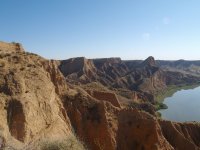
The view of the reservoir is no less spectacular and, much to the delight of bird watchers, it is the habitat of a huge number of bird species. This enclave, together with the Malpica de Tajo and Azután Islands, has been declared a Site of Community Interest owing to their special nature.
The route descends next to the viewpoint of Los Enebros, equipped with several tables to sit and rest. The descent continues through a scarcely populated area owing to the sandy soil where only a few scattered bushes can grow. Careful attention should be paid to the signs and the path in this area. The route continues to climb down until it arrives close to the private farming estate of Alcubillete, situated on a beautiful ledge over the reservoir. The path continues along the CM-4050 for about 1.5 km, until it reaches another viewpoint over the reservoir with tables to rest and enjoy some refreshment.
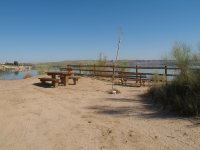
From here, the Trail drifts away from the reservoir, running parallel to the canal for about five kilometres along sand tracks flanked by bushes and olive groves. This canal connects the reservoir with the Castrejón-Carpio Waterfall that can be visited in Stage 24. It may be possible to see anglers testing their skills in the canal. At an interStage two kilometres from the endpoint of this Stage is a sign indicating that the Trail continues to the right (north), directly towards the town of La Puebla de Montalbán, via a pleasant path through olive groves.
Sites of interest
Profile
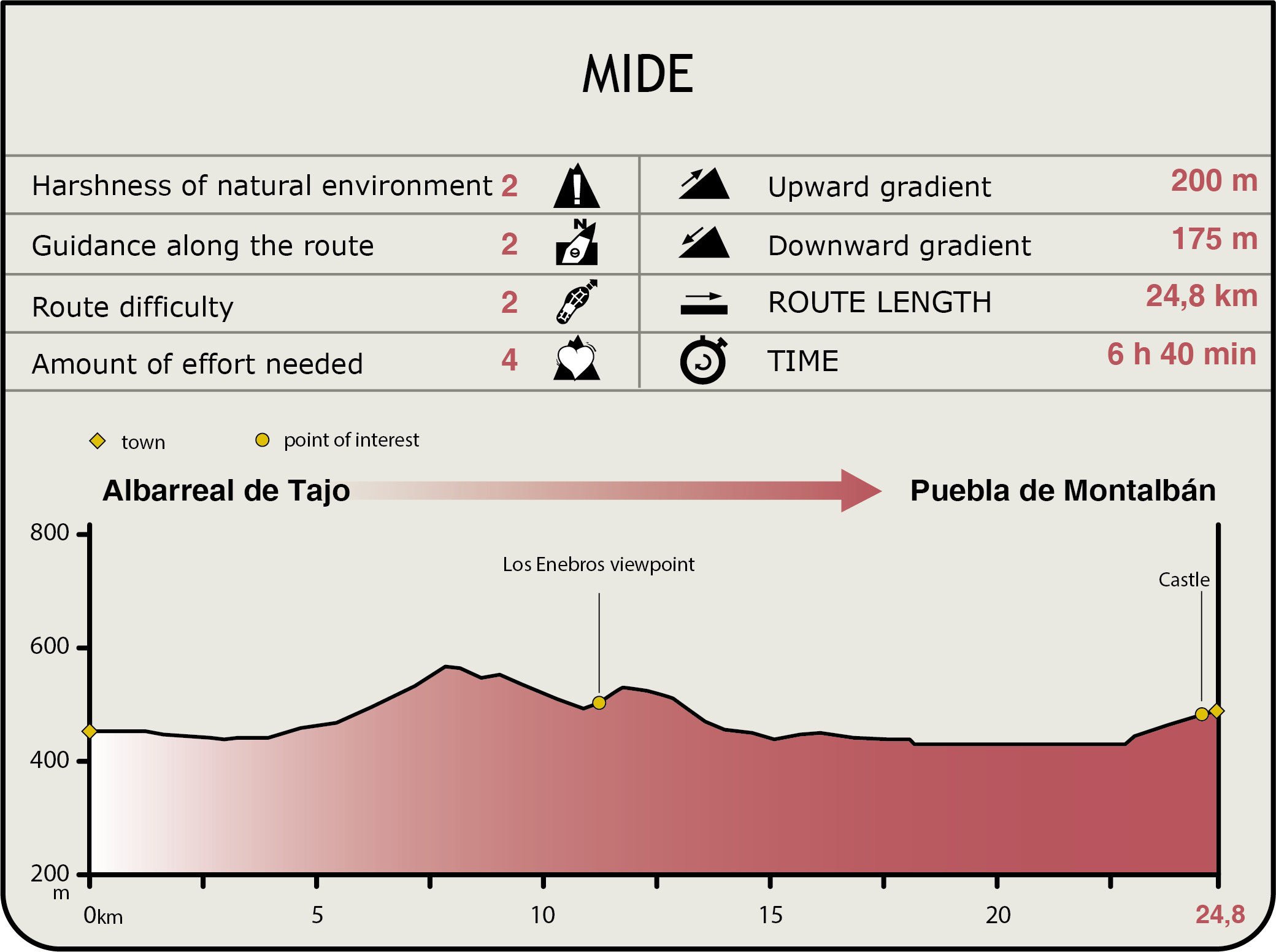
MIDE (Method for the Information of Excursions)
Featured
Further information
La Puebla de Montalbán
This town has a rich artistic and cultural history, evidenced by its designation as a Property of Cultural Interest. It boasts the Plaza Mayor and the Montalbán Palace, as well as the Montalbán Castle, the Church of Nuestra Señora de Melque and the Montalbán Bridge with eleven arches and granite ashlars.
Notable are the arches of the Plaza Mayor supported by granite columns and the gateway that gave access to what in its day was the Mesón Grande de la Plaza, mentioned in "La Celestina" by the author Fernando de Rojas. The town hall is located on the west side. The Palace of the Dukes of Osuna occupies the southern façade, and the parish church of Nuestra Señora de la Paz is on the western end.
The Montalbán Palace was built in the fifteenth century by the master from Santiago, Juan Pacheco. The three-floor building has a square plan. The main façade has a Plateresque, trabeated door emblazoned with the Montalbán family's coat-of-arms. The wrought-iron balconies, typical of Castilian manors, are rectangular. Magnificent coffered pine ceilings in three different styles -Moorish, Gothic and Plateresque- can be seen inside.
